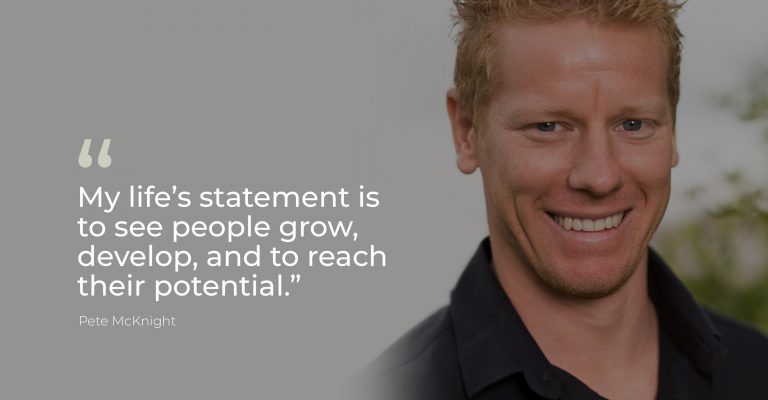How Performance Coaching Works – And How You Can Benefit From It

Performance coaching is a science and an art. It’s a blend of cutting-edge technology with deeper philosophical concepts. These quantifiable and qualitative characteristics reach holistically across the six elements of our Circle of Better Life model. This ensures every single Hintsa coaching experience involves a component of transactional and transformational change, and in turn allows for new behaviours, insights, and beliefs to be revealed.
The process of performance coaching
The historic roots of coaching lead back to the English medieval term “coche”. The word translates as a wagon or carriage that travelled from a defined starting point to a desired endpoint. This metaphorical evolutionary journey remains embedded at the core of the Hintsa programme. Our performance coaching clients generally seek an element of change in their professional and personal lives to improve performance.
In more recent times coaching can be traced to the predominately goal-orientated sports coaching arena and therapeutic or personal development domain. The book “Mastering Coaching” describes how neuroscience, positive psychology, behavioural science, mindfulness, and experiential learning amongst other disciplines have further shaped the coaching domain. Effective coaching is widely regarded as a balance of task and relationship with an emphasis on generative change through the definition and achievement of specific goals. This is outcome-orientation rather than problem-orientation as it “stimulate(s) a person’s inherent growth potential” and is highly solution-centred and future-focused.
The Hintsa performance coaching process deconstructs quantitative data against a wider humanistic and holistic background. This meticulous process of observation, analysis and feedback across the different elements (Sleep and Recovery, Nutrition, Physical Activity, Biomechanics, Mental Energy and General Health) presents the opportunity to improve specific behavioural performance. This is underpinned at a deeper level where open and honest exploration around identity and values sets a context for transformational change.
Finding patterns and changing habits
The two “Cs” coaching concept was created by the American behavioural specialist Robert Dilts. The distinction was devised to frame the difference between behavioural and transformative change.
Little “c” coaching focuses on behavioural change where coaching interventions are designed to promote the conscious awareness of engrained habits and actions. The collation and analysis of scientific data raises self-awareness of particular patterns and trends. This forms the basis to set realistic and achievable goals moving forwards to modify or create new habits.
For example, with our clients at Hintsa, we use wearable activity trackers to measure daily movement by recording individual steps taken. These existing habits are examined by the coach and client together to create new workable goals. These can include walking meetings, observing a ‘time to move’ alarm, choosing stairs over escalators or lifts and scheduling a walk at lunch with friends. These new behaviours are tested and a coach adds an element of external accountability to optimise performance.
Digging into purpose and priorities
Large “C” coaching digs deeper to “strengthen identity and values, and bring dreams and goals into reality” (2). This level of coaching digs into our unconscious mind and questions our true purpose and passion. The core questions offer the chance to look beyond our routine behavioural interactions and reflect on the deeper importance in our life. The answers may lie hidden in our unconscious mind and large “C” coaching provides a safe and non-judgemental space to honestly appraise these underpinning questions that drive longer-term transformational change.
Who are you?
What do you want?
Are you in control of your life?
It’s often helpful to allocate some time to contemplate these questions or revisit your thoughts over a period of time. Each element in the Circle of Better Life provides a pathway to the core and connections often stretch across different areas of our lives. The behaviour exhibited in each element is shaped by our inner motivators, beliefs, and values; our approach to exercise, sleeping and eating. These habits are sometimes only revealed and/or believed through the honest appraisal of scientific evidence and observation from an external, trusted source: the coach.
Hintsa’s coaches, mentors, and specialists form a multi-layered approach to blend little “c” coaching with large “C” coaching. The coaching process is individually co-created between each client, their personal performance coach and core mentor with assistance from specific element specialists that support transactional and transformational change to optimise performance.
Starting your own coaching journey
Over the next few days purposively deliberate on your behaviour and mindset in relation to little “c” and big “C’ coaching. Awaken the conscious mind and question your engrained behaviours and habits in relation to nutrition, sleep, mental energy and physical activity. How often do you sleep walk through life?
Draw your attention into the present moment and observe your everyday actions and decisions. Question how they support your wider performance and allocate some time to dig deeper to consider your underpinning purpose. Are your extrinsic behaviours in support or conflict of your authentic true self? Be honest and trust your instinct.



